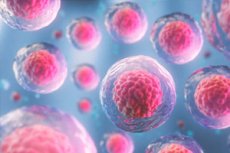Iron Feeds Immune Cells — and That May Worsen Asthma
Sist anmeldt: 14.06.2024

Alt iLive-innhold blir gjennomgått med medisin eller faktisk kontrollert for å sikre så mye faktuell nøyaktighet som mulig.
Vi har strenge retningslinjer for innkjøp og kun kobling til anerkjente medieområder, akademiske forskningsinstitusjoner og, når det er mulig, medisinsk peer-evaluerte studier. Merk at tallene i parenteser ([1], [2], etc.) er klikkbare koblinger til disse studiene.
Hvis du føler at noe av innholdet vårt er unøyaktig, utdatert eller ellers tvilsomt, velg det og trykk Ctrl + Enter.

You've probably heard that you can get iron by eating spinach and steak. You may also know that it is an essential trace mineral that is a major component of hemoglobin, the protein in red blood cells that carries oxygen from the lungs to all parts of the body.
A lesser-known important function of iron is its role in generating energy for certain immune cells.
In a recently published study from our laboratory, we found that blocking or limiting the entry of iron into immune cells could potentially improve the symptoms of an allergen-induced asthma attack.
Immune cells that need iron
During an asthma attack, harmless allergens activate immune cells in your lungs called ILC2s (intrinsic lymphoid cells type 2). This leads to their proliferation and the release of large amounts of cytokines - messengers that immune cells use to communicate, and causes unwanted inflammation. The result is symptoms such as coughing and wheezing, which make your airways feel like they are being compressed.
To evaluate the role of iron in ILC2 function in the lung, we performed a series of experiments with ILC2 in the laboratory. We then confirmed our findings in mice with allergic asthma and in patients with varying degrees of asthma severity.
Experimental results
First, we discovered that ILC2s use a protein called transferrin receptor 1 (TfR1) to take up iron. When we blocked this protein at the time of ILC2 activation, the cells were unable to use iron and were no longer able to proliferate and cause inflammation as efficiently as before.
We then used a chemical called an iron chelator to prevent the ILC2 from using iron. Iron chelators are similar to supermagnets for iron and are used medically to manage conditions in which there is too much iron in the body.
When we deprived ILC2s of iron using a chelator, the cells were forced to change their metabolism and switch to a different mode of energy production, similar to changing a sports car to a bicycle. The cells were no longer as effective at causing inflammation in the lungs.
Next, we limited cellular iron in mice with sensitive airways due to ILC2 activity. We did this in three different ways: by inhibiting TfR1, adding an iron chelator, or inducing low total iron levels using a synthetic protein called mini-hepcidin. Each of these methods helped reduce airway hyperresponsiveness in mice, which actually reduced the severity of their asthma symptoms.
Finally, we studied cells from asthma patients. We noticed something interesting: the more TfR1 protein on their ILC2 cells, the worse their asthma symptoms were. In other words, iron played a large role in the severity of their asthma. TfR1 blockade and iron chelator treatment reduced ILC2 proliferation and cytokine production, suggesting that our results in mice are applicable to human cells. This means we can move these results from the laboratory to clinical trials as quickly as possible.
Iron therapy for asthma
Iron is like an orchestra conductor, telling immune cells like ILC2 how to behave during an asthma attack. Without enough iron, these cells can't cause as much trouble, which could mean fewer asthma symptoms.
Next we are working on targeting a patient's immune cells during an asthma attack. If we can reduce the amount of iron available to ILC2s without depleting overall iron levels in the body, this could lead to new therapies for asthma that address the underlying cause of the disease, not just its symptoms. Available treatments can control symptoms to keep patients alive, but they do not cure the disease. Iron-related therapies may offer a better solution for asthma patients.
Our discovery applies not only to asthma. This could be a game changer for other diseases that involve ILC2s, such as eczema and type 2 diabetes. Who would have thought that iron could be so important for your immune system?
The results of the work are described in detail in an article published in the journal The Conversation.
